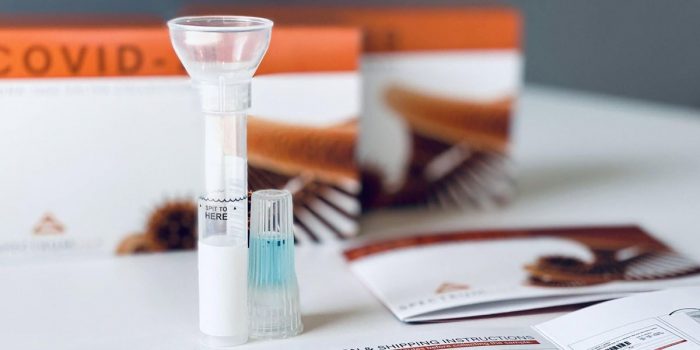Between You and Me: A COVID test may make you want to spit
By Leah S. Dunaief

There has been a lot in the news recently about COVID testing. We can request at-home test kits, and the government promises to send them to us through the mail. Also, we can shortly obtain N95 masks, the most efficient at filtering out microbes from the air, from pharmacies and other health centers. Those should be available to us by the end of next week.
Here is a new angle for consideration. Testing thus far has focused on using swabs inserted up the nose. But there is, perhaps, a more comfortable and more accurate possibility: spitting into a tube. “The virus shows up first in your mouth and throat,” according to Dr. Donald Milton, an expert on respiratory viruses at the University of Maryland who was quoted by The New York Times last Saturday. This means that testing saliva or swabbing the inside of the mouth could help identify people who are infected days earlier, some research suggests.
Here are some findings from Dr. Milton and his associates. Three days before symptoms appear and for two days after, “saliva samples contained about three times as much virus nasal samples and were 12 times as likely to produce a positive P.C.R. (gold standard) result. After that, however, more virus began accumulating in the nose …” The Food and Drug Administration (FDA) has now authorized numerous saliva-based PCR tests which work well for screening students at schools.
“Saliva really has turned out to be a valuable specimen type and one that has increasingly been advocated as a primary testing sample,” said Dr. Glen Hansen, of the clinical microbiology and molecular diagnostics laboratory at the Hennepin County Medical Center in Minnesota.
Since Omicron “appears to replicate more quickly in the upper respiratory tract and have a shorter incubation period than earlier variants,” if attention to the mouth and throat would be able to detect the virus earlier it would be particularly valuable, according to Emily Anthes, the NYT reporter.
Further, researchers in South Africa, where Omicron was first identified, have determined that saliva swabs of that variant were better indicators of infection than nasal swabs in the P.C.R. tests, although the opposite was true for the Delta variant. But other research studies have had mixed results. As is usual, more research is needed.
There are also other aspects to saliva tests. It is possible that while highly sensitive tests like PCR might identify infection in saliva days earlier, less sensitive tests like the antigen test in the at-home kit, might not. And there are other considerations. What else has passed through the mouth before the test is given? And how will that affect the pH and the result? Also, saliva can be “viscous and difficult to work with,” especially when patients are sick and dehydrated, according to Dr. Marie-Louise Landry, director of the clinical virology laboratory at Yale New Haven Hospital, who is also quoted in the NYT.
In Britain, some at-home tests require swabbing both the throat and the nose. Multiple site testing would seem to offer an advantage. But test manufacturers would have to reconfigure their tests accordingly. Throat swabs need to be bigger. And most importantly, the at-home rapid antigen tests would have to be authorized for mouths or throats, which they currently are NOT. The biochemistry of the mouth is different from that of the nose and may yield a false positive.
Ultimately a variety of test options to meet a variety of situations would seem the best result. For those who have symptoms for several days, a nasal swab might be the choice. Saliva tests might work better for large-scale surveillance of asymptomatic people.
Meanwhile making at-home antigen tests available for everyone is a positive step.







